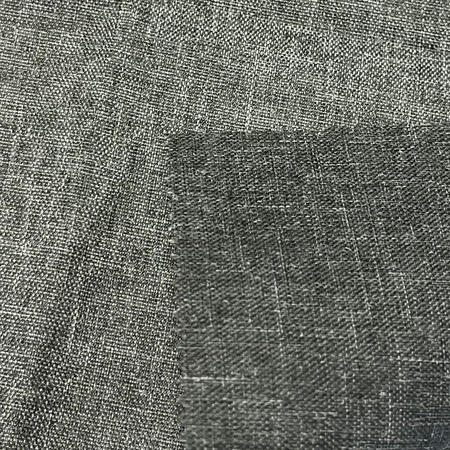Yes, while cationic luggage fabrics offer several advantages in terms of color vibrancy and durability, there are some limitations to the color palette and design options that you should consider. These limitations stem from the cationic dyeing process, material properties, and manufacturing constraints. Below is a detailed breakdown of these limitations:
Color Palette Limitations:
Cationic Dyes Are Specific: Cationic dyes are designed to bond with positively charged fibers (e.g., modified polyester or nylon). While this results in vibrant and long-lasting colors, the range of available dyes is more limited compared to conventional dyeing methods. This can restrict the variety of shades and tones that can be achieved.
Bright Colors Excel: Cationic fabrics are particularly well-suited for bright, bold colors like reds, blues, and yellows. However, achieving softer or pastel shades may be more challenging due to the intensity of the dyeing process.
Limited Earth Tones: Neutral or muted tones (e.g., beige, taupe, gray) may not achieve the same depth or richness as brighter colors, which could limit design flexibility for certain aesthetics.
Color Matching Challenges: Achieving precise color matching between different batches of fabric can be difficult due to variations in dye lots or slight differences in fiber composition. This can pose challenges for brands that require consistent branding across multiple production runs.
Design Complexity:
Pattern Limitations: While cationic fabrics support vibrant solid colors, creating intricate patterns or gradients can be more challenging. The dyeing process works best for uniform color application, so designs requiring fine details or multi-color prints may need alternative printing techniques (e.g., sublimation or screen printing).
Sublimation Printing Compatibility: If sublimation printing is used, the fabric must have a polyester base to allow the ink to bond properly. This may limit design options if the fabric contains non-polyester blends.
Layered Designs: Adding complex layered designs (e.g., embroidery, appliqué) may require additional processes that could increase production costs and time. Additionally, these embellishments might not adhere as well to certain finishes or coatings applied to the fabric.
Material Constraints:
Fiber Type Restrictions: Cationic dyeing is most effective on synthetic fibers like polyester and nylon. Natural fibers (e.g., cotton, wool) or blends with high natural fiber content cannot be dyed using the cationic process, limiting the use of hybrid materials in luggage fabric.
Blends May Compromise Colorfastness: If the fabric is a blend of cationic-dyeable fibers and non-cationic fibers, the resulting color may appear uneven or less vibrant.
Coatings and Finishes: Many luggage fabrics include protective coatings (e.g., PU, TPU) or laminations to enhance water resistance and durability. These coatings can sometimes interfere with dye penetration or affect the final appearance of the fabric, potentially limiting design options.
Production and Cost Considerations:
Specialized Equipment Required: The cationic dyeing process requires specialized equipment and expertise, which can increase production costs. This may make it less feasible for small-scale or highly customized projects.
Minimum Order Quantities (MOQs): Manufacturers often require large MOQs for custom colors or designs, which can limit flexibility for smaller brands or niche markets.

Environmental and Regulatory Factors:
Restricted Dye Availability: Some cationic dyes may not meet strict environmental or regulatory standards (e.g., REACH, OEKO-TEX®), limiting the range of colors that can be used in eco-friendly or certified products.
Sustainability Trade-Offs: While cationic fabrics can be made from recycled materials, the dyeing process itself may involve chemicals that are less sustainable. This could impact the availability of certain colors or finishes that align with green initiatives.
Aesthetic Trends and Consumer Preferences:
Market Demand for Neutrals: While cationic fabrics excel at producing bold, vibrant colors, consumer preferences in luggage often lean toward neutral or understated tones (e.g., black, navy, gray). This mismatch between capability and demand could limit the appeal of cationic fabrics in certain markets.
Fashion vs. Functionality: Luggage designers must balance aesthetic appeal with functional requirements like abrasion resistance and water repellency. Some design elements (e.g., glossy finishes or metallic accents) may not align with the practical needs of travel gear.
Comparison with Other Fabric Options:
Alternative Printing Techniques: Compared to other fabrics that support digital printing or screen printing, cationic fabrics may have fewer options for detailed or photorealistic designs. For example, fabrics treated with sublimation printing can achieve high-resolution images, but this process may not work as effectively on all cationic fabrics.
Non-Cationic Fabrics: Traditional polyester or nylon fabrics may offer broader color palettes and design flexibility but lack the superior colorfastness and UV resistance of cationic fabrics.
Practical Solutions to Overcome Limitations:
Hybrid Approaches: Combining cationic fabrics with other materials or printing techniques (e.g., embroidery, heat transfers) can expand design possibilities while retaining the benefits of cationic dyeing.
Custom Blending: Working closely with manufacturers to develop custom fiber blends or finishes can help achieve specific aesthetic goals without compromising performance.
Focus on Branding: Brands can leverage the vibrancy of cationic fabrics to create bold, eye-catching designs that stand out in the market, even if the color palette is somewhat limited.















